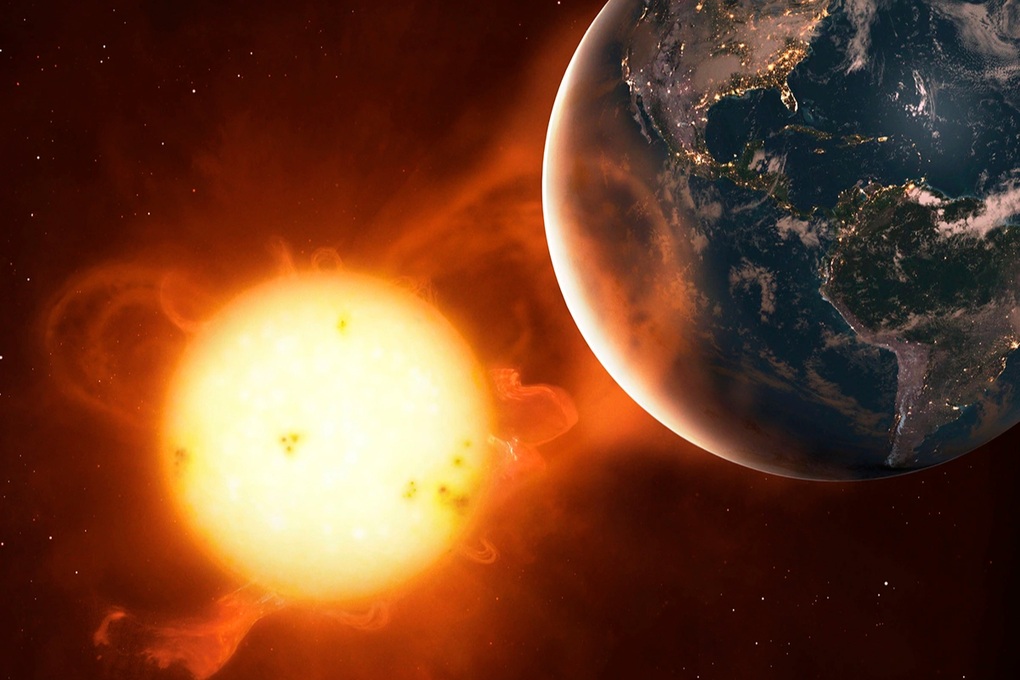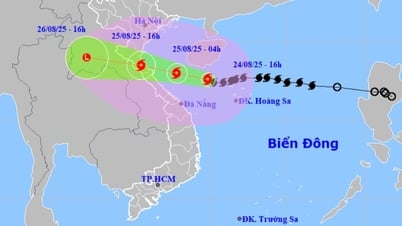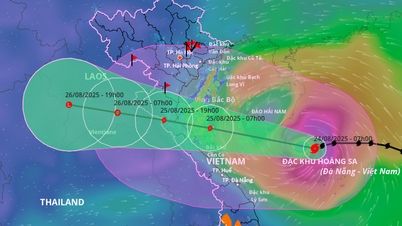
Many areas in the US and Europe are experiencing severe heat, with temperatures exceeding 38°C (Photo: Getty).
On July 3, Earth reached its farthest point in its orbit around the Sun. This is called aphelion . At this point, the distance between the two celestial bodies was 152.1 million kilometers, 4.98 million kilometers farther than at perihelion in early January.
Paradoxically, despite being furthest from the Sun, the Northern Hemisphere is experiencing intense heat waves, with temperatures exceeding 38°C in many areas, including North America and Europe.
This phenomenon is not an error in the meteorological system, but a typical demonstration of the dominant role of the Earth's axial tilt on climate.
Many people believe that the distance from the Earth to the Sun is the main factor that determines the seasons and temperatures. However, what really causes seasonal climate changes is the Earth's 23.5-degree tilt on its axis.
Specifically, when the Northern Hemisphere tilts toward the Sun in June and July, the Sun is higher in the sky, its rays shine almost perpendicular to the ground, and the daylight hours are longer, increasing the amount of heat absorbed each day.
Conversely, in December and January, although the Earth is closer to the Sun, the rays have a greater angle of inclination and the days are shorter, making the Northern Hemisphere colder.
According to reports in the US, on the summer solstice on June 20, the angle of the sun's rays causes some cities to receive three times more heat than on the winter solstice on December 21. That is why July, even though the Earth is far from its heat source, is still the hottest month in many places in the Northern Hemisphere.
From an astrophysical perspective, as the Earth moves farther from the Sun, it also slows down according to Kepler's second law. Specifically, its current orbital speed is only about 29 km/s, down from more than 30 km/s at its closest point.
This contributes to the length of summer in the Northern Hemisphere. Although sunlight is now about 6.55% dimmer, the effects of the axial tilt completely overwhelm this slight decrease.
The above explanation also helps to correct a fairly common misconception: the seasons do not depend on the distance from the Sun, but on the tilt of the rotation axis.
More broadly, uneven heat distribution is also influenced by atmospheric factors, land/ocean ratios, and the increasingly severe phenomenon of global warming.
Source: https://dantri.com.vn/khoa-hoc/vi-sao-mat-troi-van-thieu-dot-trai-dat-du-dang-o-diem-xa-nhat-20250704072816259.htm











































































































Comment (0)